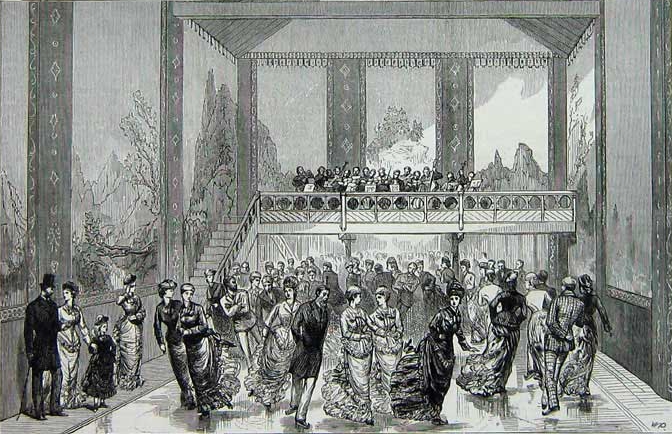 |
| Versailles in 1675. |
Louis XIV Moves into Palace of Versailles, 1682
Before it was a palace, Versailles was the site of a royal hunting lodge. Louis XIV had always been fond of the lodge and decided to build his great palace there. As a location it was ideal. It was situated in the country and Louis could require his nobles to attend to him there, removing them out of Paris and making it less convenient for them to form factions, or to plot behind his back.The building of the palace began in 1661 and continued over several building campaigns. Finally, on May 6th, 1682, the court officially relocated there.
Ceremony and rank were much valued at Versailles. Louis kept close track of who attended him there, and those who were frequently absent soon found they were out of his favor. Besides the opulent quarters of the royal family, 350 small apartments were provided for the use of the courtiers. The apartments were of varying sizes, some as small as one or two rooms, and each was furnished with a key, which was required to be surrendered when leaving. The odor of Versailles was said to have been quite remarkable -- the first toilets there were not installed until 1768.
 |
| Mint Block of the Penny Black. |
England's First Postage Stamp Introduced, 1840
The Stamp was called the Penny Black, and it was a huge innovation. Prior to this, postage had to be paid by the recipient and the cost depended on the number of sheets and the distance traveled. It took a long time to deliver a letter -- in fact, studies made at the time indicated that it took an hour and a half to deliver 67 letters. Under the new, prepaid system, 570 letters could be delivered in half an hour.The Penny Black was printed in black ink and was stamped with red when it was mailed. It bore a picture of Queen Victoria and was self-adhesive. The stamps, however, were not perforated, and had to be cut apart.
 |
| A night at the Glaciarium, 1876 |
First Mechanically Frozen Ice Rink Opens, 1876
The first mechanically frozen ice rink was called The Glaciarium and was located in Chelsea, London. The inventor was John Gamgee, who had invented the process while experimenting with methods of artificially freezing meat.He began with a flat surface of concrete, over which he laid copper tubes, through which a solution of glycerin, ether, nitrogen peroxide, and water was pumped. The whole assembly was then covered with two or three inches of water, which was frozen by the chemical mixture being pumped through the tubing. The building had murals of Alpine scenes painted on the walls, and was provided with music and seating for spectators and conversation.
The Glaciarium was very successful at first, and Gamgee opened two more rinks later that same year. Once the initial novelty wore off, however, skaters were put off by the heavy mists arising from the ice surface, and attendance declined. The Glaciarium was closed by the end of 1876. By 1878 his other two rinks had closed as well.
No comments:
Post a Comment